We met up with the guys from Geissele Automatics at SHOT this year – they’re the other big name in custom triggers along with Timney – and while Timney focuses on single stage triggers Geissele tends to tackle the more complex designs. One of the more interesting triggers they make is the S3G or “Super 3 Gun” trigger. Specifically intended for use in 3-gun competitions, Geissele makes some interesting claims about its performance. I was curious, and needed to find out if it lives up to its product description. So I emailed William Geissele and a couple days later it was sitting in my mailbox.
Here’s the product description that raised my eyebrows:
The Geissele Super 3 Gun (S3G) trigger is a semiautomatic-only derivative of the two-stage Super Select-Fire (SSF) combat trigger that Geissele Automatics produces for customers in the U.S. Special Operations Community. The S3G was developed to combine the SSF combat trigger’s match-grade semiautomatic performance with its smooth single-stage full-automatic feel to make a fast, smooth, and robust trigger ideal for 3 Gun competition shooting. The new Geissele Super 3 Gun trigger has a super short trigger pull and a short reset so that rounds can be sent downrange as quickly as possible while still maintaining superb accuracy. The SSF’s long, smooth pull was shortened and combined with a lightning-quick reset to give it a unique, hybrid trigger pull that is a cross between a traditional two-stage and single-stage trigger while at the same time retaining the safety and robustness of the SSF’s two-stage trigger design.
[…]
After the trigger moves a short distance, the weapon discharges. Nothing precedes the discharge: no second stage stop, no grittiness, no stacking of the trigger pull weight as the hammer is cammed down like on a stock AR15 trigger. The trigger finger feels a sensation of walking along a perfectly flat, glassy-smooth plateau that suddenly drops away.
So, in summary, their claims are that the trigger uses a perfectly smooth single stage trigger pull which brings you to a nonexistent second stage (there is no “wall” on top of the “hill”) in one smooth action, and that design makes it ideal for fast but accurate fire.
As soon as I installed the trigger in my test rifle I knew that at least one of their claims was accurate: the trigger pull was so smooth that I couldn’t even tell if I was moving it. There wasn’t even the slightest hint of grit as it moved backwards. I felt their triggers at SHOT and figured that their display models had been well worn and specially tuned to make them that smooth, but even this factory fresh trigger was like sliding your finger along like it was on a stick of warm butter.
And then I felt something strange, something I had never felt before: there was no break. None whatsoever. The trigger keeps moving along its silky smooth path and then suddenly the hammer falls and the gun goes off. There was no warning and no last chance to muscle the sights on target. The gun goes off and then the trigger resets. It’s an interesting design feature, one I’ve never seen before on a rifle, and I had to know if it made a difference in terms of speed.
A quick note about installation before moving on. The Timney trigger comes pre-packaged in a drop-in container that fits straight into your lower receiver. There are no springs or pins to worry about — it fits perfectly with no mucking about. The Geissele trigger, on the other hand, is a standard configuration trigger meaning that the hammer, disconnector and trigger assemblies are three separate pieces and need to be assembled inside the receiver. It’s a bit of a pain to get them all in there and properly aligned, but the process only takes about 10 minutes, tops.
To test out the trigger, I set up a little experiment.
First, using a .22lr conversion kit (because ammo is spendy and I am broke) I fired a whole bunch of rounds as fast as I could with a Timney trigger (AKA the “control”). Then I swapped out the lower receiver for the one with the Geissele trigger and again tried to fire as fast as possible. Since the test was about how fast a person can pull the trigger, .22lr was an adequate choice as all I needed it to do was reset the trigger for me.
The results were that it was much easier to quickly send lead downrange with the Geissele trigger than with the Timney trigger. I confirmed the findings with a couple mags of .300 BLK just to be sure and everything checked out.
The reason behind this quickness in lead delivery is that your finger never stops moving. All you do is slap the trigger back and forth and the rounds go downrange. In contrast, a trigger like the Timney makes you stop before and after every round and the trigger pull is a more jerky motion. The smooth pull of the Geissele trigger combined with the lack of a break means that a single fluid motion operates the trigger. It’s both quicker and more accurate during high speed fire.
The trigger works for precision shots as well, but personally I don’t see that as a viable use for the trigger. I’m a huge fan of proper two stage triggers for precision shooting. Feeling that break and knowing exactly where it is gives me comfort and confidence in my ability to choose exactly when I break the shot.
Traditional two stage triggers are much much slower and, in my opinion, more accurate than the S3G trigger. But that’s not what Geissele designed it to do. This trigger was built for speed, to let the shooter hose down relatively close range targets as fast as humanly possible. And for that job, this trigger is without a doubt the best.
Is this the ultimate 3-gun trigger? That depends on the specific competition. If you’re farthest target is going to be 100 yards away I would say that this is the perfect fit, but if your match director is a dick and likes to set up some 300+ yard targets. then I’d prefer a two stage trigger. It all boils down to personal preference and the conditions of the specific match.
One thing is for certain, though: Geissele wasn’t lying about the features of their trigger. They met and even exceeded their own criteria and have indeed produced the fastest trigger I’ve ever used.
Specifications:
Pull Weight: 3.5 lbs
MSRP: $240
Ratings (out of five stars)
Ease of Use * * * * *
The trigger drops straight into the receiver, and once it’s in there you’re done. No worse than installing any other milspec trigger.
Feel & Function * * * * *
Butter smooth with a nonexistent break.
Overall Rating * * * * *
A damn fine trigger built to fill a specific niche. Probably not the “one trigger to rule them all” but when you need to go fast this is what you need.
S3G Trigger at Geissele’s Website

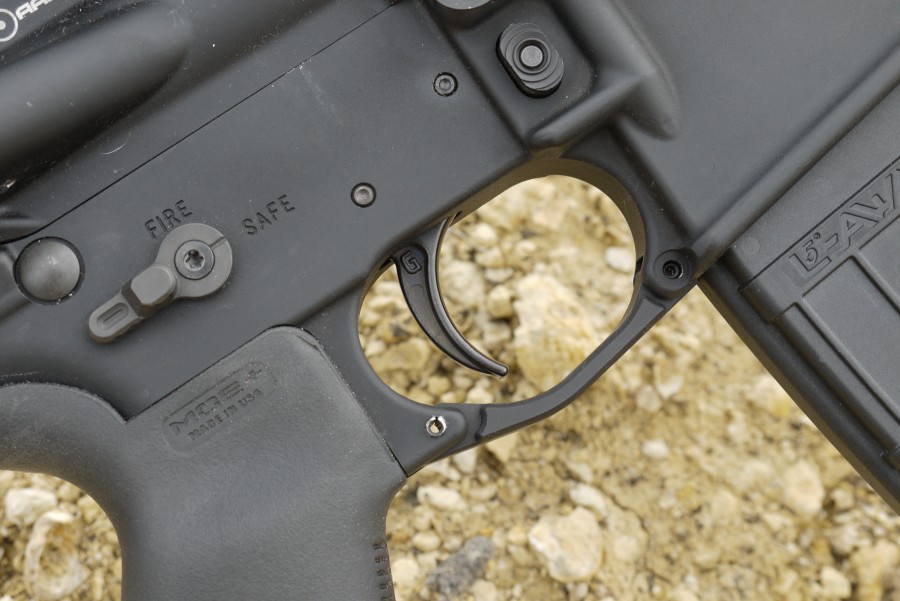
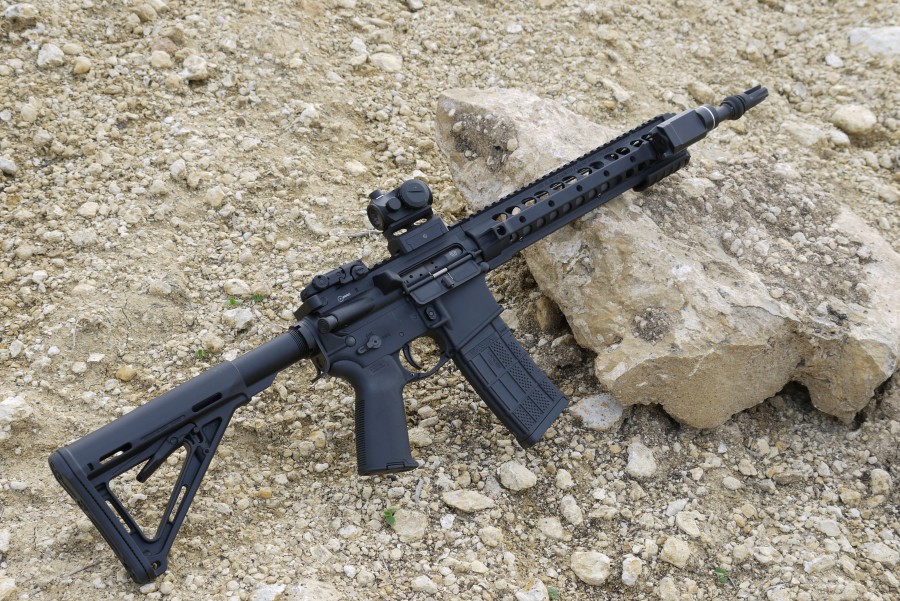
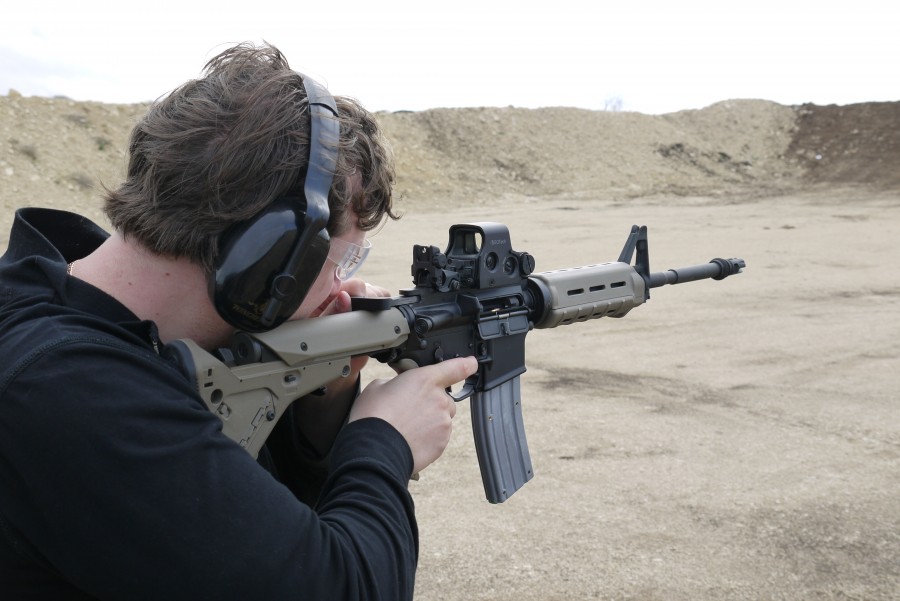
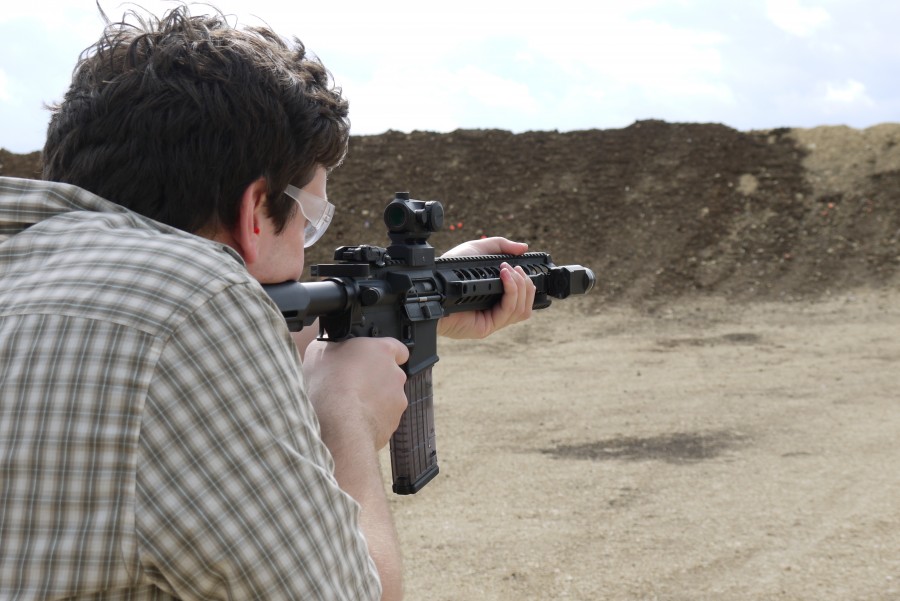
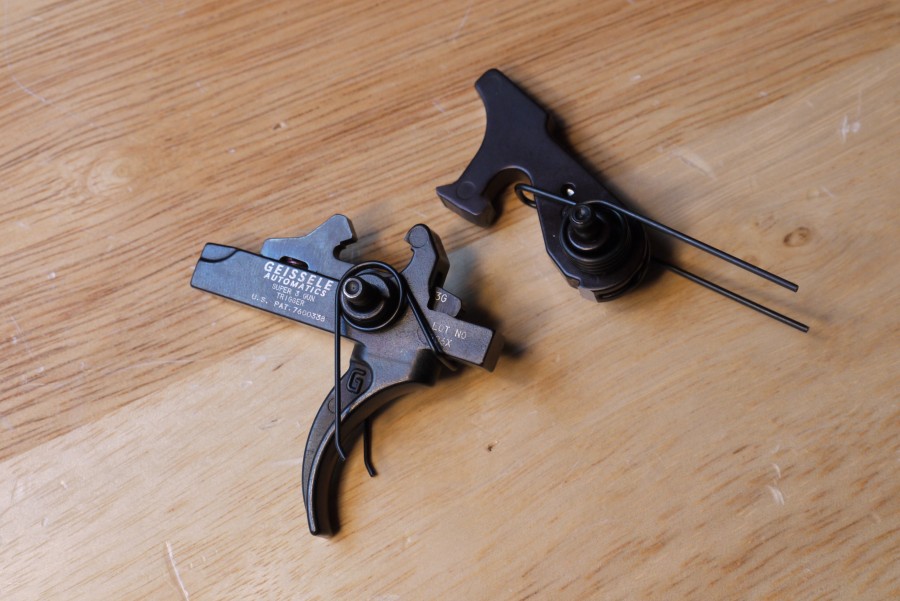



Squishy. That’s all.
I’ve been using this for about 7 months. The S3G trigger is excellent. It requires about the same discipline as a 2 lb. 1911 trigger that has been adjusted for minimal take-up.
That is, “keep your booger-hooker off the bang-switch until you want the gun to do its thing”.
I know it’s not spelled the same, but I kept imagining that this trigger was manufactured by a Brazilian supermodel.
HAHA nice. I thought the same until I heard someone say the actual name.
Yes, Geissele, pronounced “Guyslee.”
My favorite design from Geisselle and my favorite AR platform trigger. Calling Geisselle the “other guys” isn’t fair. He makes a superior product and stands behind his products 100%. Great article, great review, great trigger. Makes me happy to see Geisselle getting some much deserved love.
I don’t know about you, but my favorite Geissele trigger is the SSF. It’s also the only one I’ve used to put lead downrange.
Once I get my M16, the first thing I’m doing is going up the road to Geissele’s shop (~17 miles) to get a trigger for it.
At that point, I’ll probably put SSA/SSAE triggers in my other lowers so that they all behave similarly.
Ya, Geisselle is the trigger guy.#1 in my Book.
Good artical about the S3G; but, have you had any experience with the Geissele SDE (Super Dynamic Enhanced), 2 stage trigger. I have two MP-15’s (one 5.56 and one .300BLK) that DESPERATELY need triggers. While I’m not crazy about spending huge bucks, I don’t mind paying for what I get IF IT’S WHAT I REALLY WANT. Since I don’t have any experience with Geissele Triggers (or true 2-stage triggers) I’m looking for all the input I can get. My only experience with a “2 stage” is the Glock “safety takeup” then a somewhat “creepy” 3.5# trigger pull. With that said, I’ve come to like that “2 stage feel”
I had this trigger and it Was Good, but I got a Wilson Combat TTU 3 gun trigger and liked it Much Better because it Was More versatile in my hands and for my uses, the TTU 3 gun always makes me feel like Im in Control of my weapon even when rapid firing and Not vice versa like the Geisselle seemed to do! I can even effectively use the TTU 3 gun as a bench rest trigger because I always have so much control over it unlike the geisselle super3gun which accidently bump fired a few times when I tried to shoot it from bench rest! Overall the build quality of the Wilson seems a little More High Speed and Better in my Honest opinion, My next trigger Im getting from geisselle is the Rapid Fire trigger from Brownell’s which has an even Smoother break and reset than the super3gun, Next I need to buy a lower for it cuz my Wilson Combat TTU 3 gun is staying Put in my PWS Mark 1 lower where it belongs !!! lol 🙂
I have about 500 rounds downrange with my S3G. I bought it for a versatile weapon with a 1×6 SWFA scope. So far I have been shooting various ammo for groups at distance (not the recommended best use for the S3G). However, I’ve shot sub-MOA groups from a bench at 300 yards, which works for me! I will tell you that you have to develop a good follow-through-and-hold on this trigger at the bench, or it will double-tap. You can’t finesse it. And accuracy requires a press-hold-pull for accuracy. Not the ideal versatile trigger (but what is), but most of my needs for defense would likely be close range (at which this excels). Good to know I can reach out and touch someone if the need arises.
so which one do I need to purchase for bump fire in 300 blk
thanks
Comments are closed.